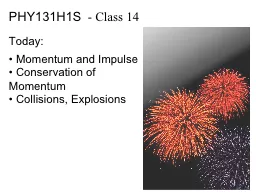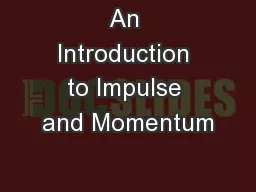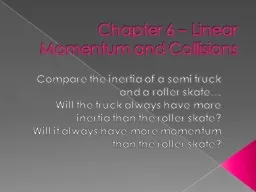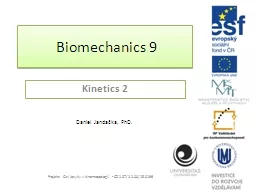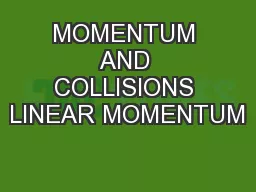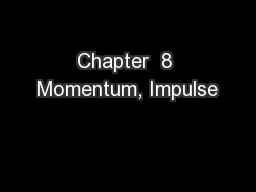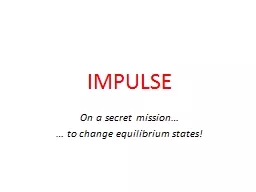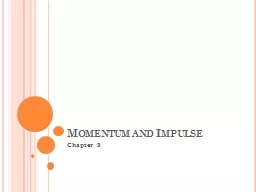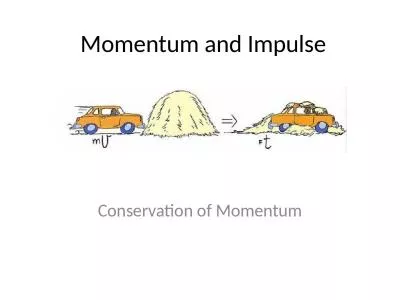PPT-Impulse and Momentum
Author : ellena-manuel | Published Date : 2016-05-01
Chapter 7 71 The ImpulseMomentum Theorem This section deals with timevarying forces affecting the motion of objects The effects of these forces will be discussed
Presentation Embed Code
Download Presentation
Download Presentation The PPT/PDF document "Impulse and Momentum" is the property of its rightful owner. Permission is granted to download and print the materials on this website for personal, non-commercial use only, and to display it on your personal computer provided you do not modify the materials and that you retain all copyright notices contained in the materials. By downloading content from our website, you accept the terms of this agreement.
Impulse and Momentum: Transcript
Download Rules Of Document
"Impulse and Momentum"The content belongs to its owner. You may download and print it for personal use, without modification, and keep all copyright notices. By downloading, you agree to these terms.
Related Documents



